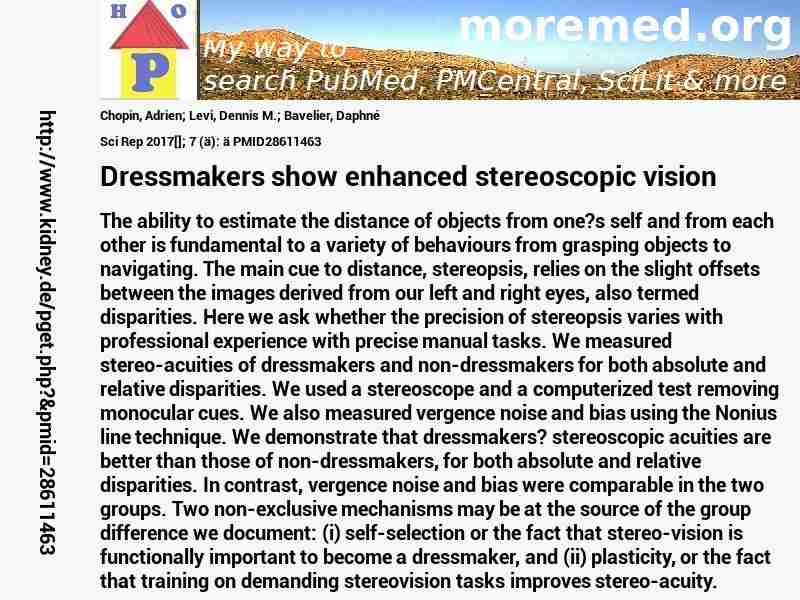
|
10.1038/s41598-017-03425-1
http://scihub22266oqcxt.onion/10.1038/s41598-017-03425-1

C5469751!5469751!28611463
 free free
 free free
 free free
Warning: file_get_contents(https://eutils.ncbi.nlm.nih.gov/entrez/eutils/elink.fcgi?dbfrom=pubmed&id=28611463&cmd=llinks): Failed to open stream: HTTP request failed! HTTP/1.1 429 Too Many Requests
in C:\Inetpub\vhosts\kidney.de\httpdocs\pget.php on line 215
|  
Warning: imagejpeg(C:\Inetpub\vhosts\kidney.de\httpdocs\phplern\28611463.jpg): Failed to open stream: No such file or directory in C:\Inetpub\vhosts\kidney.de\httpdocs\pget.php on line 117
 Sci+Rep 2017 ; 7 (�): � Sci+Rep 2017 ; 7 (�): �
Nephropedia Template TP
gab.com Text
Twit Text FOAVip
Twit Text #
English Wikipedia
|
Dressmakers show enhanced stereoscopic vision #MMPMID28611463Chopin A; Levi DM; Bavelier DSci Rep 2017[]; 7 (�): � PMID28611463show ga
The ability to estimate the distance of objects from one?s self and from each other is fundamental to a variety of behaviours from grasping objects to navigating. The main cue to distance, stereopsis, relies on the slight offsets between the images derived from our left and right eyes, also termed disparities. Here we ask whether the precision of stereopsis varies with professional experience with precise manual tasks. We measured stereo-acuities of dressmakers and non-dressmakers for both absolute and relative disparities. We used a stereoscope and a computerized test removing monocular cues. We also measured vergence noise and bias using the Nonius line technique. We demonstrate that dressmakers? stereoscopic acuities are better than those of non-dressmakers, for both absolute and relative disparities. In contrast, vergence noise and bias were comparable in the two groups. Two non-exclusive mechanisms may be at the source of the group difference we document: (i) self-selection or the fact that stereo-vision is functionally important to become a dressmaker, and (ii) plasticity, or the fact that training on demanding stereovision tasks improves stereo-acuity.�
  
DeepDyve
Pubget Overpricing | 
|